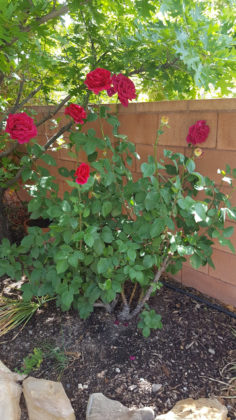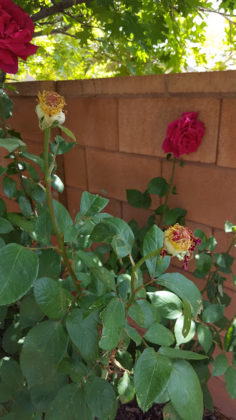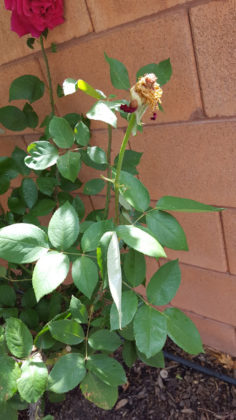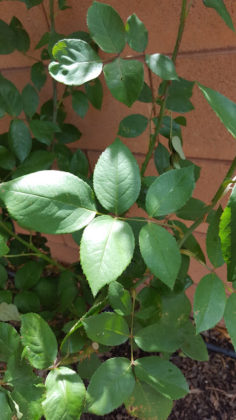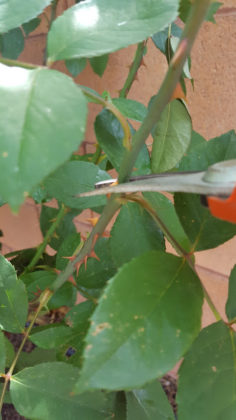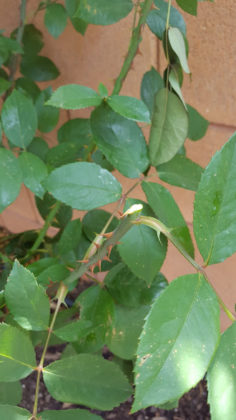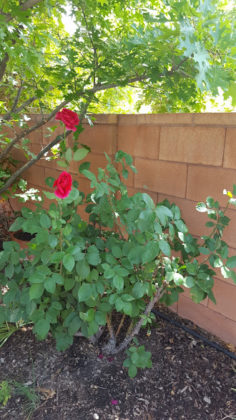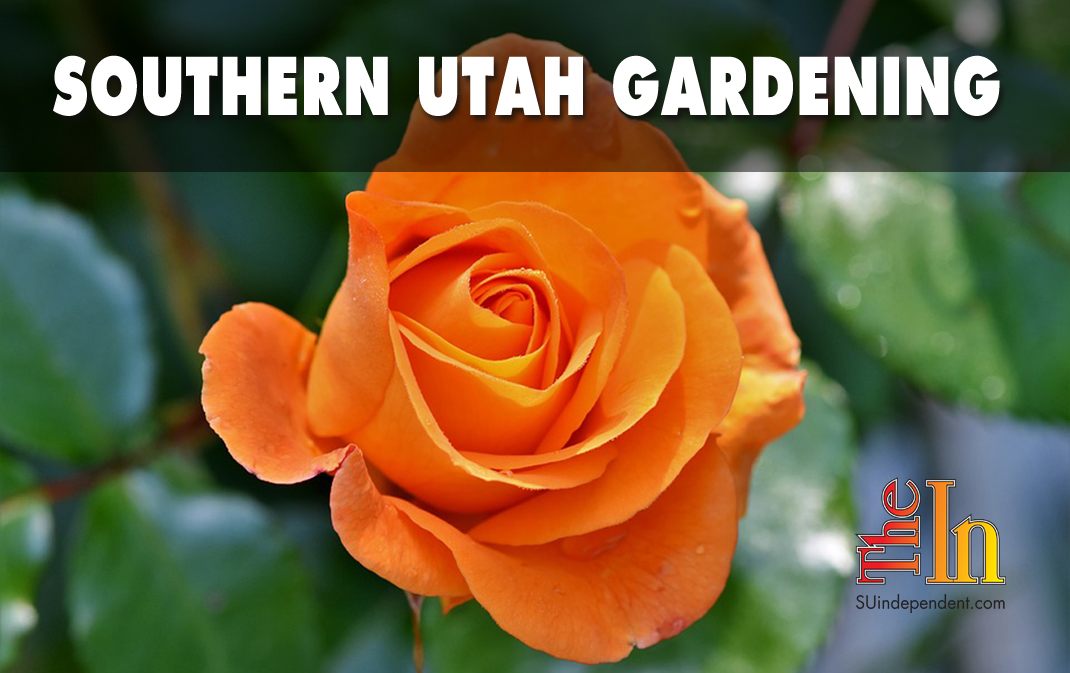 Southern Utah Gardening: Deadheading roses
Southern Utah Gardening: Deadheading roses
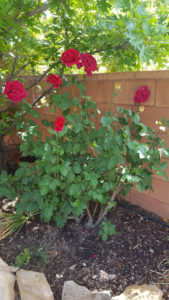 I thoroughly enjoyed the prolific and huge blooms on my roses in May! Then they stated to fade, and I knew it was time to start thinking about deadheading them. Deadheading is the removal of spent, or mostly spent, flowers from a plant. Deadheading roses, along with regular fertilizer applications, encourages the plant to not use energy to produce seed so it can get back to producing more flowers ASAP.
I thoroughly enjoyed the prolific and huge blooms on my roses in May! Then they stated to fade, and I knew it was time to start thinking about deadheading them. Deadheading is the removal of spent, or mostly spent, flowers from a plant. Deadheading roses, along with regular fertilizer applications, encourages the plant to not use energy to produce seed so it can get back to producing more flowers ASAP.
First, I gathered my standard rose deadheading tools: my trusty hand pruners and some gloves heavy enough to protect me from the roses’ thorns. Then I zeroed in on the completely spent blooms.
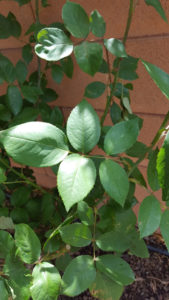 Next, I located the second five leaflet. A leaflet is actually an entire leaf consisting of many smaller leaves connected to the main stem by one petiole. (I just love being able to use plant terminology in a relevant situation.) Anyway, I moved down the stem from the spent bloom until I found the second leaflet with all five smaller leaves present.
Next, I located the second five leaflet. A leaflet is actually an entire leaf consisting of many smaller leaves connected to the main stem by one petiole. (I just love being able to use plant terminology in a relevant situation.) Anyway, I moved down the stem from the spent bloom until I found the second leaflet with all five smaller leaves present.
This is where I used my pruners to remove the old flower. You may go lower on the stem to another leaflet if you desire, but go to at least the second five leaflet to make your cut.
I continued cutting and removing blooms that were completely spent. Then I started removing the flowers that were losing petals when I bumped them. I decided to go ahead and remove any blooms that were not losing petals but were all the way open and I could see the entire inside of the flower. It didn’t leave me with very many flowers, and I admit I was a little deflated after the magnificence of the peak bloom in May.
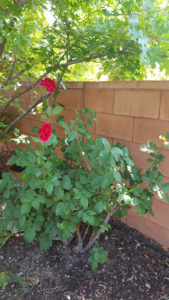 However, it was time to fertilize again, and I knew this would do the trick of getting some more roses on the way. I aim to fertilize at monthly intervals with a granular fertilizer. I always make sure the soil is moist before I apply the fertilizer, and then I water with a hose afterwards. Also, for about five days or so after I applied the fertilizer, I make sure the soil doesn’t dry out. Your drip irrigation may take care of this. Nevertheless, I like to use the hose and actually get out there and help the fertilizer granules dissolve. I can also monitor the soil moisture and look for pests while I’m watering. After five days, I let the drip take over watering duty.
However, it was time to fertilize again, and I knew this would do the trick of getting some more roses on the way. I aim to fertilize at monthly intervals with a granular fertilizer. I always make sure the soil is moist before I apply the fertilizer, and then I water with a hose afterwards. Also, for about five days or so after I applied the fertilizer, I make sure the soil doesn’t dry out. Your drip irrigation may take care of this. Nevertheless, I like to use the hose and actually get out there and help the fertilizer granules dissolve. I can also monitor the soil moisture and look for pests while I’m watering. After five days, I let the drip take over watering duty.
This is a great method for all your blooming annuals and perennials, not just roses. You’ll spend a little more time in your garden removing spent blooms, but the beauty you will experience will make it all worth it. You’ll also have the chance to watch for pests before they get the best of your beauties! Early morning gardening, finding the shady spots throughout the day, a big sun hat, and a giant ice water will help it to be more comfortable during our long, hot summer. Now get outside and enjoy your garden!

